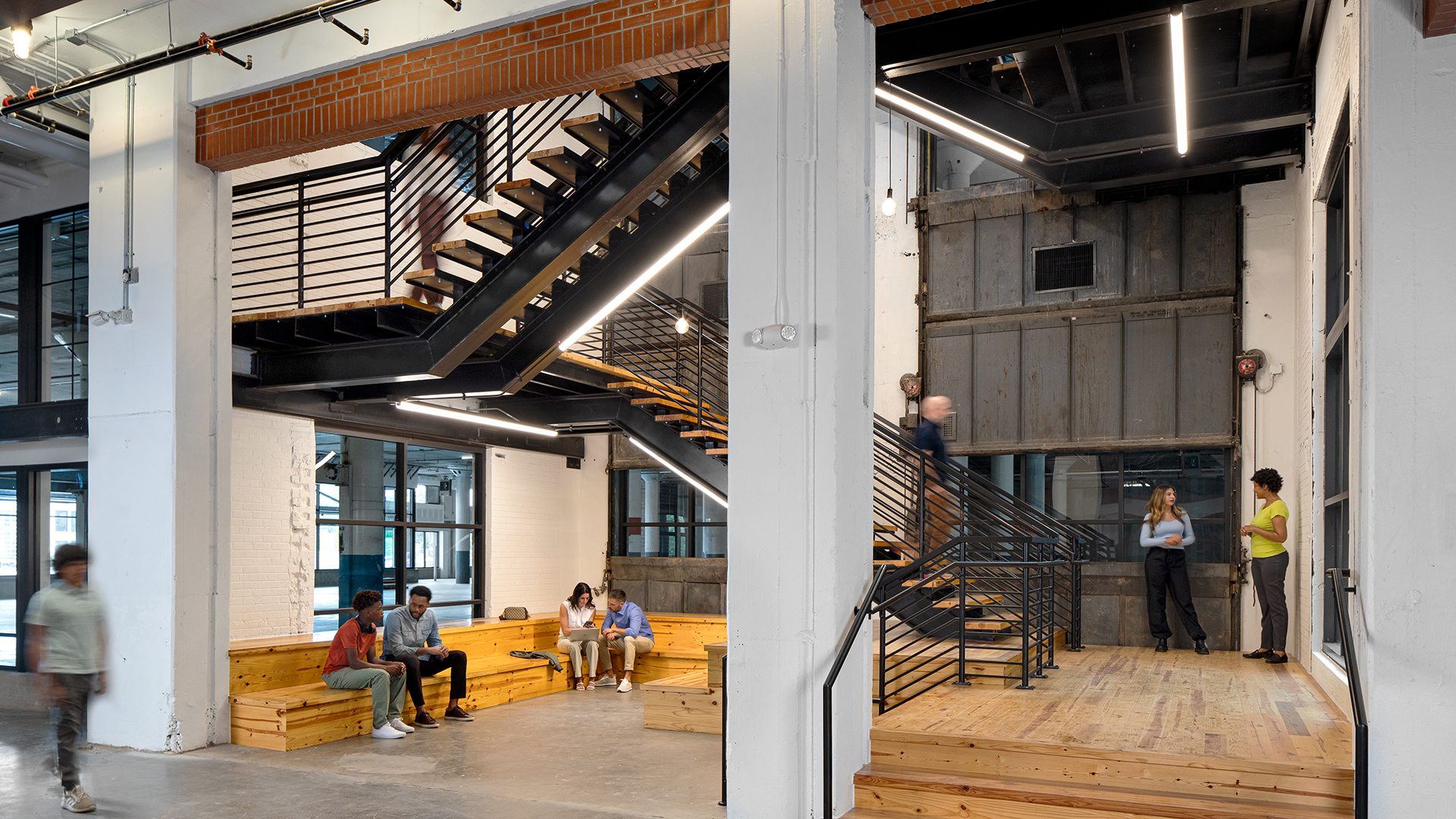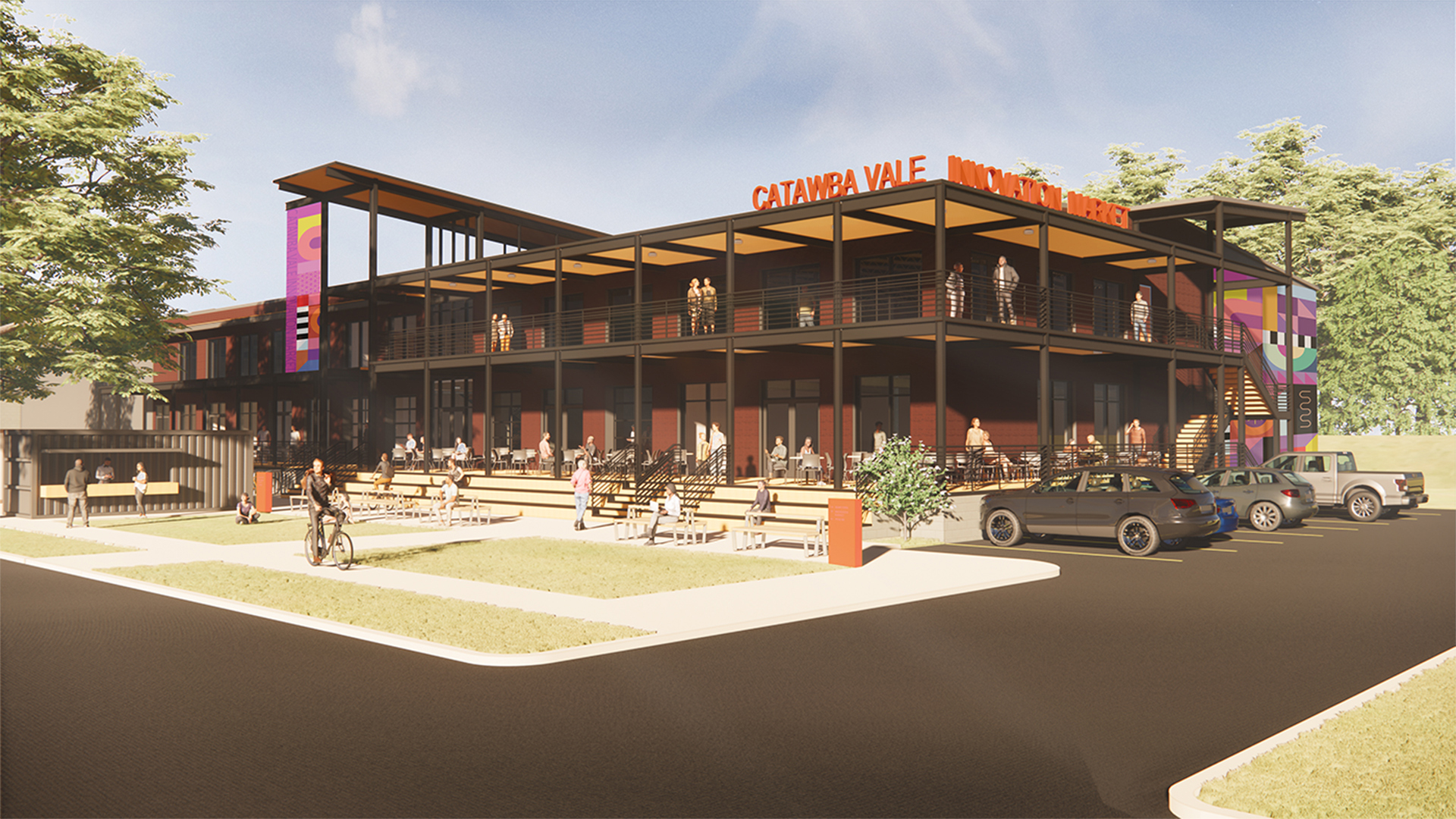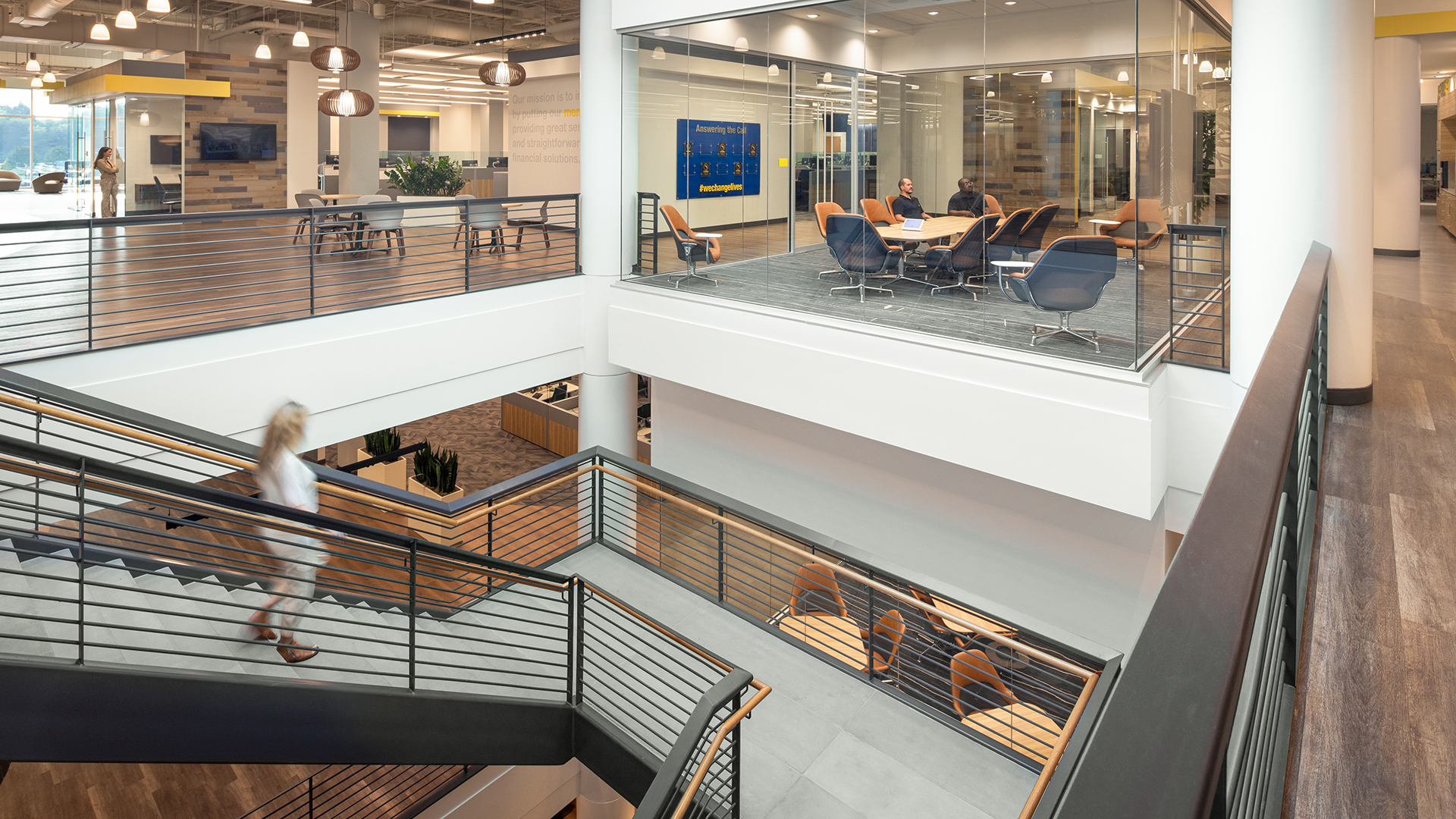As business and consumer needs evolve, adaptive reuse—the repurposing of existing buildings for new functions—has become a leading architectural solution for flexibility and sustainability, offering many benefits to our communities including:
- Cultural preservation
- Waste reduction
- Urban revitalization
- Economic stimulation
- Innovative design
In this typology, architects are provided a unique opportunity to revive underutilized spaces and continue the story of an existing building. In this article we will explore the numerous benefits of this approach and examine its multifunctionality across various urban and architectural fronts.
ADAPTIVE REUSE PRESERVES CULTURE AND ARCHITECTURE
In areas where historic preservation is a priority, adaptive reuse allows architects to craft a narrative connecting history with contemporary design while addressing modern community needs. This approach not only creates an architectural typology but also celebrates past craftsmanship and enhances urban landscapes.
In workplace and retail design, adaptive reuse enables companies to stand out by creating distinctive spaces that appeal to customers. By incorporating historical elements, these environments gain character and a unique atmosphere not found elsewhere. This connection supports greater user engagement, compelling customers to return and experience the space again.
WAYS ADAPTIVE REUSE REDUCES WASTE
Sustainability is a fundamental principle of adaptive reuse architecture. Focusing on resource conservation reduces the demand for new materials, decreasing the need for resource extraction, transportation, and the environmental impacts associated with manufacturing. Additionally, by eliminating the need for demolition, materials can be salvaged and re-used, minimizing the amount of waste sent to landfills.
The cost of a construction project can often be more economical than new construction, depending on various factors. Renovating an existing building typically reduces labor costs due to less site preparation and labor needed, making it a more efficient choice. The scope of work typically involves refurbishing and upgrading the existing conditions which allow for a streamlined process saving time and resources.
Building on the principles of sustainability and cost-effectiveness, adaptive reuse also facilitates infill development. By minimizing urban sprawl and densifying communities, land-use efficiency increases, leading to more walkable neighborhoods. As a result, decreasing reliance on cars and encouraging alternative modes of transportation reduces greenhouse gas emissions.
USING ADAPATIVE REUSE TO REVITALIZE URBAN LANDSCAPES AND STIMULATE ECONOMIC GROWTH
Many buildings remain vacant in urban areas, often in neighborhoods that would benefit from revitalization. These spaces represent missed opportunities for economic growth and community engagement. Adaptive reuse offers a solution by transforming these buildings into vibrant hubs that meet the needs of residents and visitors while introducing new functions to the neighborhood. This intentional transformation creates a ripple effect, positively influencing the urban planning of the surrounding neighborhood.
An example of this is The Thread, situated in downtown Rock Hill, SC, adjacent to a pedestrian linear park, university center, sports center, and historic neighborhood. The thread has ignited a vibrant hub where the surrounding community can gather, seamlessly connecting various functions and activities. Reverencing the past was an important design driver in this project preserving 150 years of textile history from the industrial warehouse. Beyond enhancing urban connectivity, The Thread stimulates community engagement and inspires architects and urban planners to envision similar opportunities in other communities, creating interconnected neighborhoods that reflect a unique character.
Infill projects in general are often strategically located near public transit, which can stimulate improvements in public infrastructure. As these projects develop, they typically necessitate the creation of pedestrian-friendly streets that feature wider sidewalks, street lined trees for shade and urban cooling, and inviting spaces for people to shop, stroll, and socialize. By promoting walkability and biking, infill adaptive-reuse projects support healthier lifestyles and make neighborhoods more accessible and enjoyable for everyone.
In addition to improving the aesthetic appeal of a neighborhood, adaptive reuse can boost economic growth by attracting businesses and increasing foot traffic. The increase in activity can lead to job creation and places for local entrepreneurs to engage with the community. As neighborhoods become more vibrant, public safety often improves, which, in turn, encourages further investment in public services and infrastructure.
While adaptive reuse plays a crucial role in revitalizing neglected urban spaces, this approach is equally valuable in suburban commercial districts. These locations, whether in downtown areas or suburban retail hubs, are often strategically positioned in high-traffic zones, making them ideal candidates for economic renewal without requiring demolition. Furthermore, adaptive reuse in these contexts offers additional benefits, such as faster project timelines, reduced costs, and potential tax incentives and grants to support redevelopment efforts. By reimagining vacant spaces, we can enrich the social fabric of communities, stimulate economic growth, enhance urban landscapes, and promote long term sustainability.

A CATALYST FOR INNOVATION
One of the most significant advantages of adaptive reuse is its potential to inspire innovative solutions to urban challenges. As cities and small towns navigate issues such as housing shortages, environmental concerns, and the demand for efficient infrastructure, adaptive reuse projects can provide practical responses.
An example is Catawba Vale Innovation Market in Old Fort, NC. Inspired by the area’s indigenous Catawba and Cherokee heritage, the rural town has faced significant decline in the recent decades. The project includes a film studio, meeting spaces, a small manufacturing facility, commissary kitchen alongside a coffee shop and co-working space. By engaging Black artists and offering subsidized retail space for small businesses, the Catawba Vale innovation Market fosters both economic growth and revitalizes the local community.
By revitalizing outdated or vacant spaces into mixed-use developments, we have the opportunity to create hubs that accommodate a variety of activities, including living, working, shopping, and recreation. This multifunctionality fosters community interaction and enhances social connections, ultimately contributing to a richer urban experience.

WHAT’S TRENDING
Retail Spaces
- Former loading docks are increasingly converted to outdoor seating or gathering areas.
- High ceilings can be used for mezzanines, visual merchandising, and natural light integration.
- Auto garage doors being preserved to facilitate an indoor/outdoor flow.
Workplaces
- Large interiors of industrial and office buildings are repurposed into open-plan work environments, ideal for collaborative work environments.
- Integrating biophilic design to enhance indoor air quality, connect people with nature, and support regenerative design.
- Mixed-Use developments blending offices, residences, and shared amenities.
Residential
- Exposed brick from industrial or warehouse buildings highlights texture and contrasts well with modern furniture and open layouts.
- Large factory windows are excellent for natural lighting in lofts and townhomes.
- Utilizing reclaimed materials for aesthetic appeal and sustainable design.
Many of these trends are interchangeable between building uses and allow flexibility for future reconfiguration.
Ultimately, adaptive reuse stands as a powerful testament to the intersection of sustainability, innovation, and community. This approach is not just about renovation, it’s a lens to reimagine our landscapes in ways that reflect the evolving needs and aspirations of our communities. By harnessing the rich stories embedded in historic structures, we as architects can create spaces that are sustainable, stimulate economic growth, and ignite innovation. Considering the variety of outlined benefits, let’s find inspiration to explore adaptive reuse projects and redefine what’s possible by transforming existing structures.

